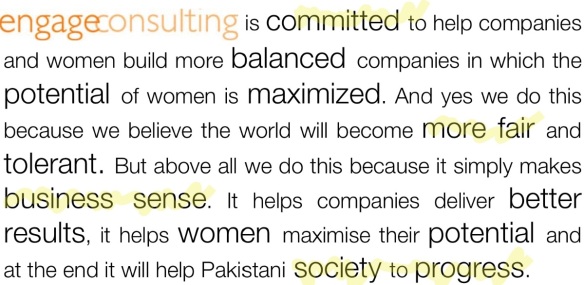Seven months ago we started on our journey to find out where gender diversity stands in Pakistan. The objective of this study was to gain insight into factors that are important to working women, to identify the best practices in place to support gender diversity and also to capture statistics on female participation in leading companies in Pakistan. We had a fantastic response and over 1000 females from 14 corporations across Pakistan participated.
Our Women @ Work 2013 report is now available. We will share with you the highlights through my blog posts over the next four weeks, but if you don’t want to wait you can read it now by downloading the full report or watch the 4 minute Women @ Work Presentation by clicking here.
Many executives both men and women ask me: Paul is it really necessary to focus on bringing in more women, is it not about who is best suited for the job. And of course the answer is that you should not appoint women if they don’t have the right skill set, knowledge, experience and attitude to perform in a role. However, in a situation where both a male and female candidate are equally qualified, our research shows that women are 8% more energized to go the extra mile, 7% more likely to stay with the organization and 10% more female employees would recommend their organization as a place to work for their friends, than their male colleagues.
So where does corporate Pakistan stand on gender diversity? The picture currently is bleak at its best. According to the World Bank, Pakistan falls in the bottom ten countries with regard to women in the workforce. Our study showed that only 10% of the employees in participating companies are females and only 5% of them are in leadership roles as opposed to the 25% recommended by gender diversity advocates and governments alike.
But not all hope is lost! With increasing realization of importance of gender diversity, multinationals have started putting pressure on their Pakistani operations to improve gender balance and are setting an example for local companies too. Progressive Pakistani companies are also taking the lead in creating opportunities for and facilitating women to progress in their careers. Companies just need to remember that hiring and nurturing the best is the only key to success!
Next week I will be sharing what women expect from their employers and how Pakistani companies are living up to their expectations.
You can download our Women @ Work 2013 report or watch our 4 minute presentation here.
– Paul Keijzer
You may also like:
Women @ Work
What Women Want… At Work











